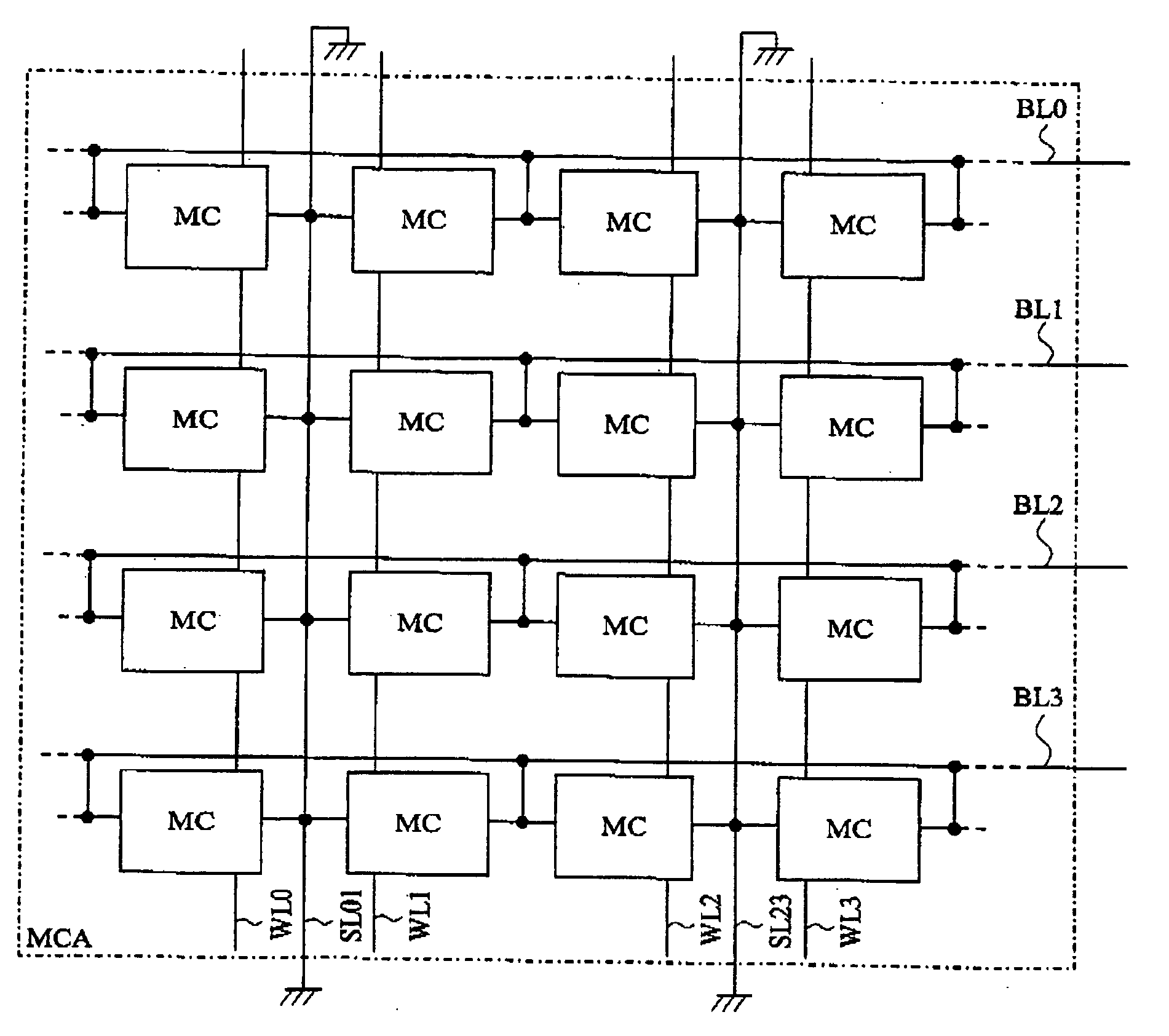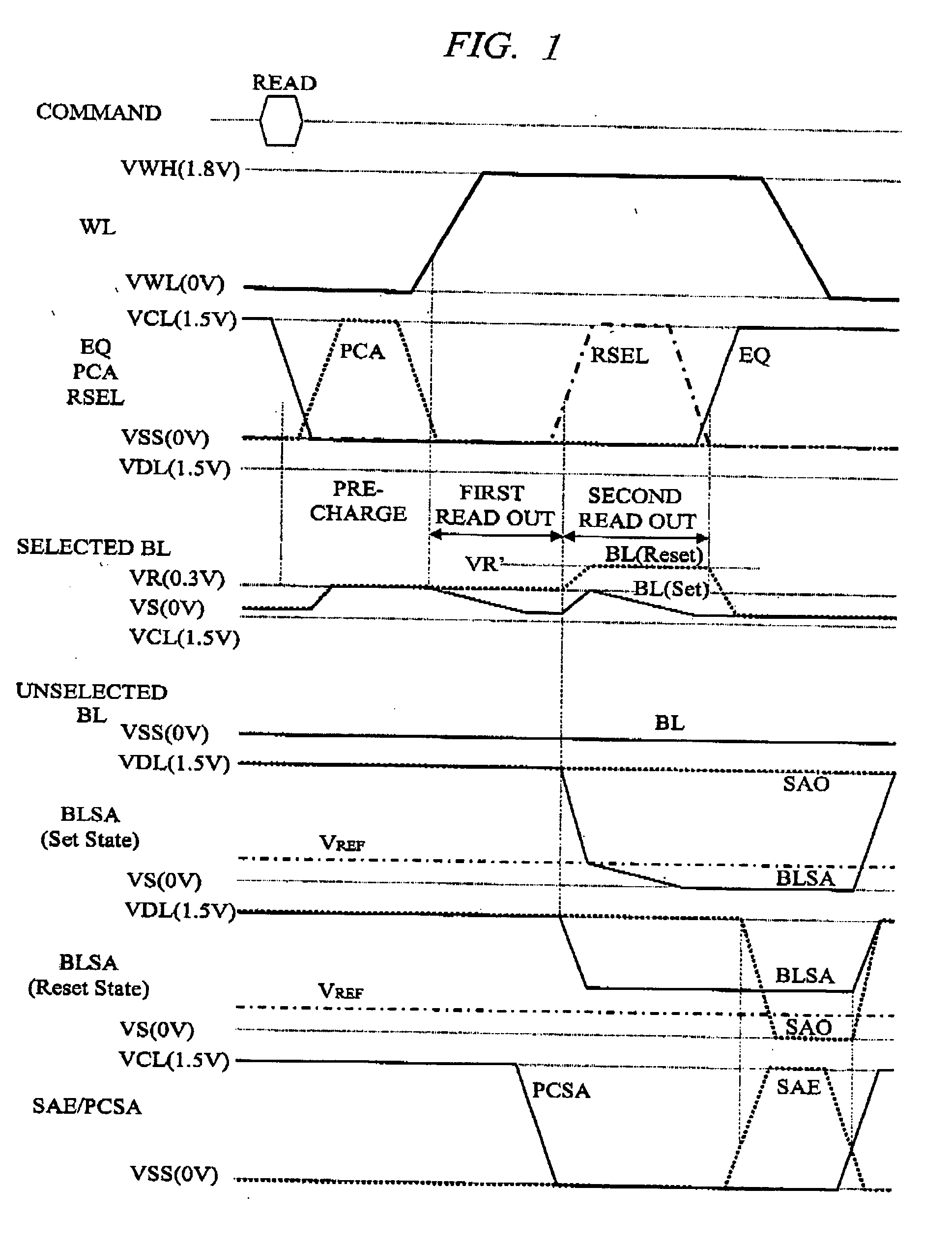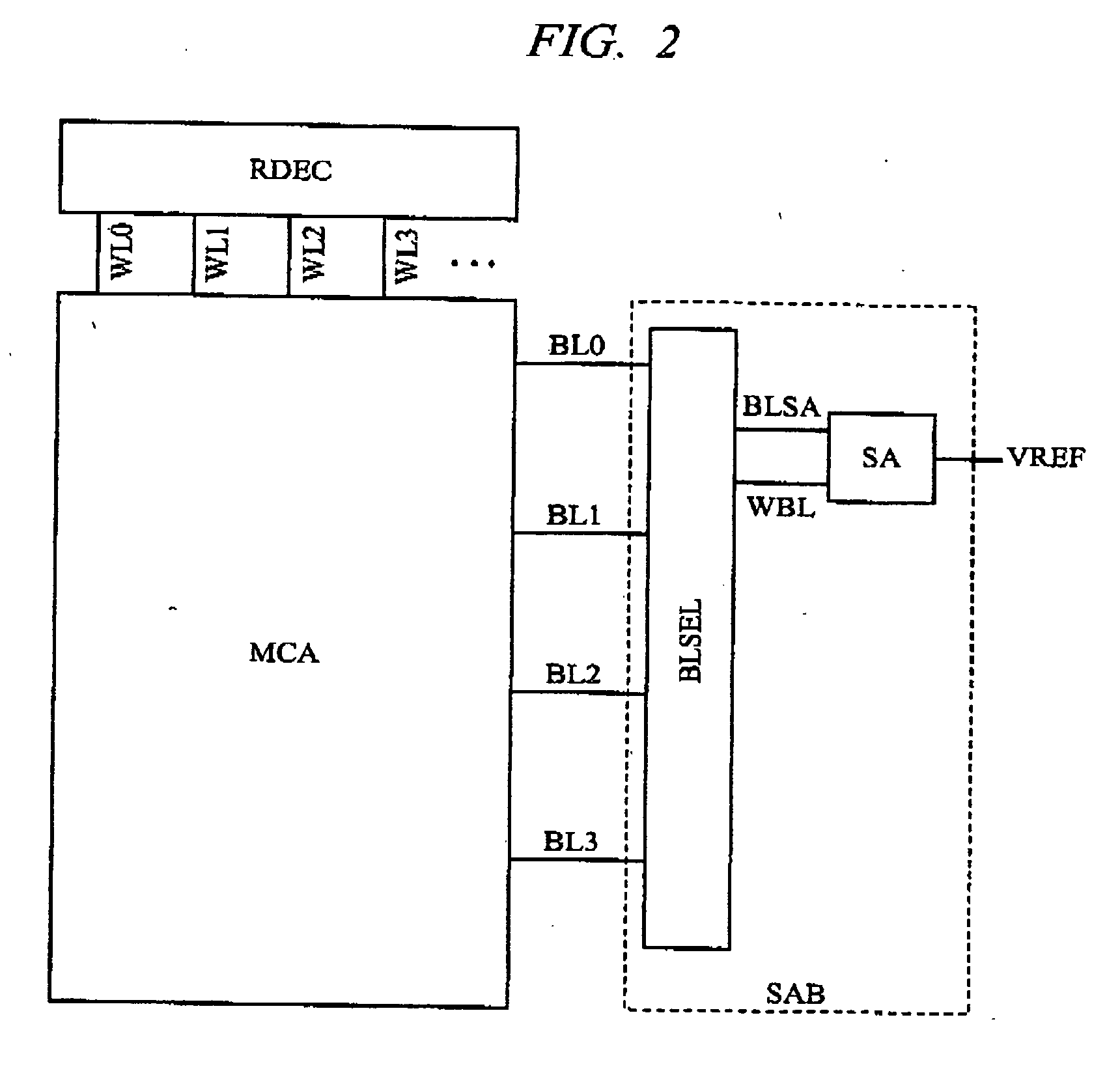Semiconductor device
a technology of semiconductor devices and semiconductors, applied in the direction of information storage, static storage, digital storage, etc., can solve the problems of destroying stored data in peripheral memory elements, joule heat damage to data in elements, and generating thermal disturbances larger than expected, so as to improve read-out operations and stable generation of reference voltages
- Summary
- Abstract
- Description
- Claims
- Application Information
AI Technical Summary
Benefits of technology
Problems solved by technology
Method used
Image
Examples
first embodiment
[0059]FIG. 1 is a waveform diagram showing an example of a read-out operation of a phase change memory which is included in a semiconductor device according to a first embodiment of the present invention. This read-out operation is characterized in that a low voltage is applied (precharged) to a bit line at the beginning of the read-out operation, and after performing a read-out operation (first read out), charge is injected into the read bit line by sharing the charge with a sense amplifier so as to perform a read-out operation again (second read out).
[0060] Before describing details of the operation, circuit configurations for realizing the present read-out operation will be described below. FIG. 2 is a block diagram showing a configuration example of a main part of the phase change memory which is included in the semiconductor device according to the first embodiment of the present invention. The configuration example shown in FIG. 2 is formed on a semiconductor substrate and in...
second embodiment
[0115] In a second embodiment, a method of generating the reference level in a read-out period will be described with using the above-described configurations and operations. Characteristics of the present method are that the time in which a high voltage is applied during a read-out period is shortened while increasing the read-out signal amount by performing a read out in two steps similar to the above-described read-out operation, and a stable reference level is generated by outputting the reference level by charge sharing. First, circuit configurations for realizing the present read-out operation will be described.
[0116]FIG. 19 is a block diagram showing a configuration example of a main part of the phase change memory included in a semiconductor device according to the second embodiment of the present invention. FIG. 19 shows the memory cell array MCA, the row decoder RDEC for selecting the word lines WL corresponding to inputted addresses, and the sense amplifier block SAB for...
PUM
 Login to View More
Login to View More Abstract
Description
Claims
Application Information
 Login to View More
Login to View More - R&D
- Intellectual Property
- Life Sciences
- Materials
- Tech Scout
- Unparalleled Data Quality
- Higher Quality Content
- 60% Fewer Hallucinations
Browse by: Latest US Patents, China's latest patents, Technical Efficacy Thesaurus, Application Domain, Technology Topic, Popular Technical Reports.
© 2025 PatSnap. All rights reserved.Legal|Privacy policy|Modern Slavery Act Transparency Statement|Sitemap|About US| Contact US: help@patsnap.com



